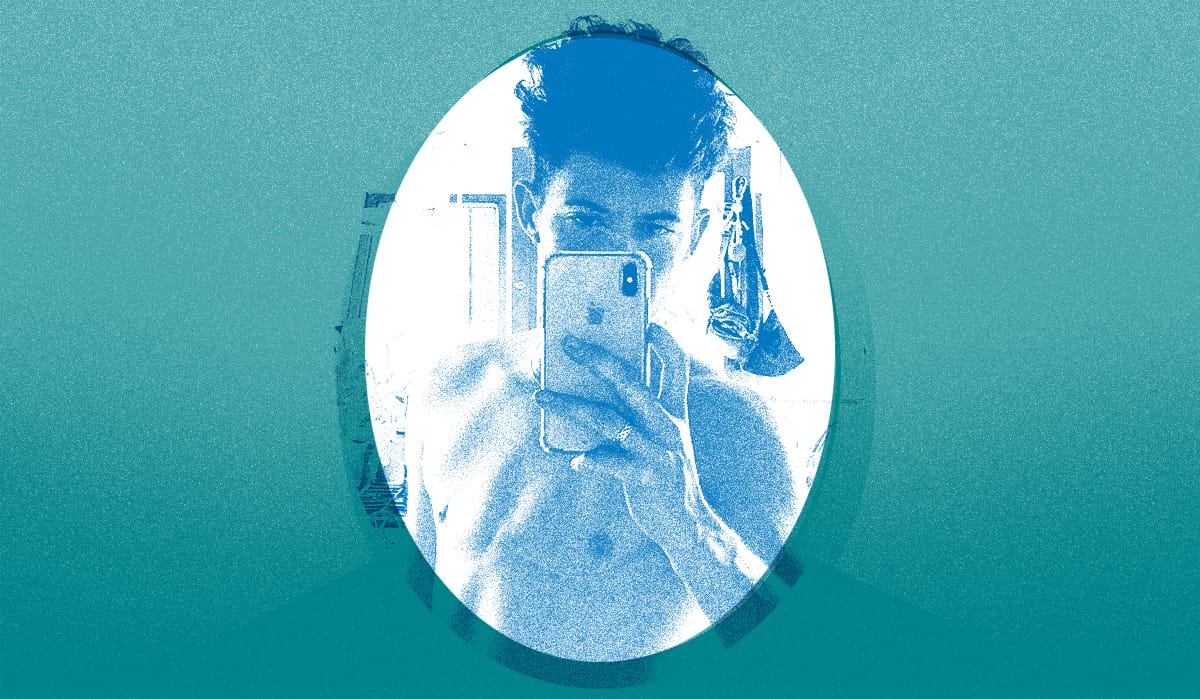Trans invisibility: on my year of living without mirrors
Vic Parsons reflects on how a year without seeing their own reflection impacted how they relate to gender and identity.

Words: Vic Parsons
I knew that I was non-binary for the first time while I was in a pole-dancing class, which was the worst place to be. All the walls of the room were mirrored. I was unable to look away as the defences I had carefully built to prevent me from knowing this crumbled. For years I’d barely looked in mirrors, occasionally glimpsing a disconnected fragment of myself out of the corner of my eye – part of my face, or a limb, never the whole sum of my body parts together. The only man in the class was my friend D, conspicuously square-shaped and muscled and bearded, in a baggy T-shirt and shorts. I was dressed like D, but in the full-length mirrors it was unavoidable: the clothes didn’t look the same on me, they didn’t look how I pictured them looking. I wasn’t used to seeing my whole body like this, all at the same time and with my face above it, too, and I was starting to panic. I didn’t recognise myself. The mirrored walls began closing in on me.
We were at the pole-dancing class because I’d recently had my heart broken. It was a classic first breakup: for a time, my life consisted only of excruciating pain and total disarray. I’d begun going to therapy, and I was trying desperately to live. In therapy I was learning that going through life by watching it happen from a corner near the ceiling, as I had a long done, wasn’t best practice, and so I was trying to do things that might help me inhabit my body. Sweatily trying to hold myself off the ground on a pole certainly succeeded at that, although the panoramic view I had of my own exertion was more confronting than I had been prepared for. I remember stumbling out of the class onto an east London side street in the early evening, sobbing uncontrollably, and then the memory fades to darkness.
"I looked in the mirror often those days, appraising my transition. My identity as a trans person felt integral to the work I was doing as a journalist, and my transition became part of that work, too"
Over the next couple of years my heart slowly healed and I rebuilt my life, ending up working as a journalist specialising in gender and identity. By the time I started taking hormones and had top surgery, I’d probably interviewed a hundred trans people about their experiences of transition, and was reading every single trans-related article in the British media every day. This was in the aftermath of 2018’s Gender Recognition Act consultation, and it felt like it was every week that me and my trans journalist friends shared with each other our astonishment at how many more articles about trans people had been published that week than the week before. We were alarmed by the spread of newspapers platforming transphobic views, which were disguised using dog-whistles that meant the authors’ denials of being transphobic were, at that time, widely considered plausible. It was the end of the 2010s, and trans visibility in the UK was reaching unprecedented heights.
